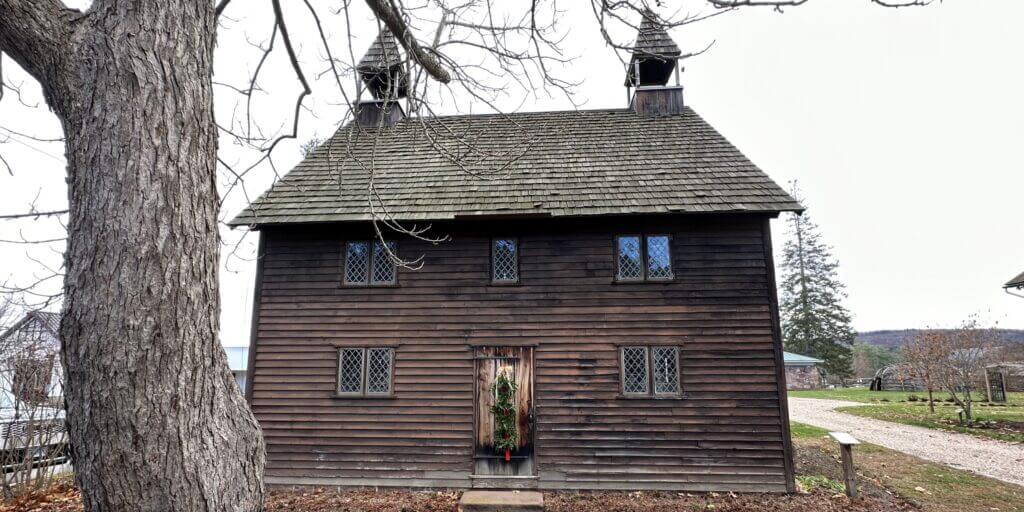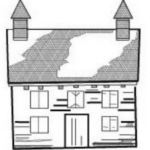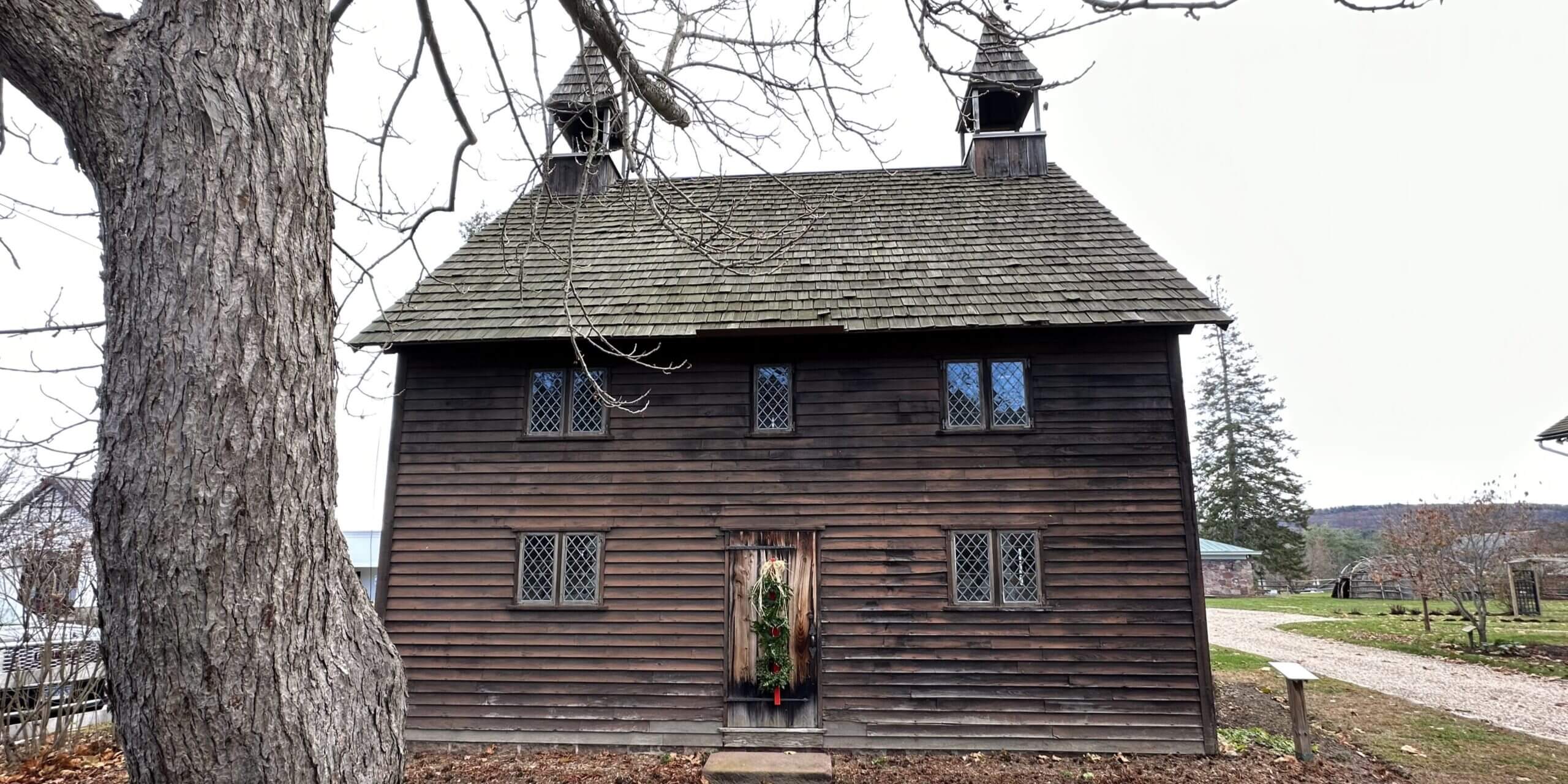The first European settlers of Simsbury, CT (a.k.a. the Massaco settlement) in the late 1600s were pious Puritans and Pilgrims (Puritan Separatists). To these Christians, the Bible was foremost. Worship services were unadorned, having worship in a “meeting house” with plain architecture, simple furnishings, and no musical instruments. (The photo is a replica of the first meeting house on the grounds of the Simsbury Historical Society). During their worship service, the sermon was predominant to devoutness and most Sundays the minister presented two sermons. Puritans were known as strict Sabbatarians – observing the Sunday Sabbath in devotion to God and thus, “abstain from being outwardly engaged in any worldly thing, either worldly business or recreations” * the entire day!

Sabbatarianism must have been a consideration for the initial farm settlers of the “West Simsbury” district in 1737-1750, which included Pilfershire. West Simsbury, which today includes the area of Canton, was a further distance (~ 6-7 miles) from Sunday worship services in Simsbury center. Much literature suggests that the disputes and dissenting opinions over the building and relocation of a new Simsbury meeting house from 1725 to 1737 lead residents to the virgin territory to the west.
“It is supposed that the ecclesiastical quarrel which, at this period, raged with so much acrimony in the old parish … had some, if not a preponderating influence in promoting the growth of this settlement …” **
Another reason for West Simsbury settlement would be the population boom at that period. The average family size was between 6-10 children. Dr. Samuel Barber and Joseph Mills each had fourteen children! Available farmland was in short supply and high demand. So, moving to the unsettled west side of Simsbury for newly married couples, like Jonathan & Rachel (Wilcox) Latimer of Pilfershire in 1760, was a well-reasoned option. Coincidently, a new Puritan (Congregational) church was established around the same time in Canton Center, while independent “Reformation” churches (like Canton Baptist Church organized 1787 from earlier separatists) were also beginning to gain momentum.
*Edwards, Jonathan. “The works of Jonathan Edwards, A.M. / with an essay of his genius and writings by Henry Rogers ; and a memoir by Sereno E. Dwight ; rev. and cor. by Edward Hickman. Vol. 2.” William Ball, London, 1839, pp. 102.
** Phelps, Noah A. “History of Simsbury, Granby, and Canton : from 1642 to 1845.” Case, Tiffany & Burnham, Hartford, CT. 1845, pp. 136-137.
by Tom Yanik





